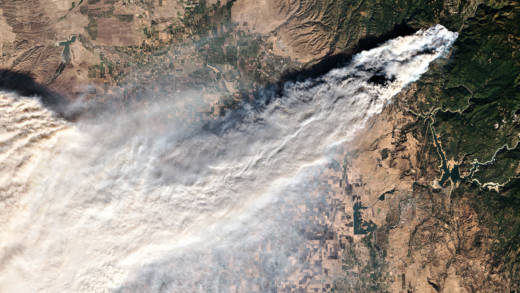Wildfire smoke can transport ash, dust and pollution over hundreds of miles. Fire scientists are finding it can also transport living things.
Fire ecologist Leda Kobziar had just learned some snow-making machines use bacteria to seed ice crystals when she went on a prescribed burn with her University of Florida students.
“And I just started thinking about the smoke in a new way and just wondering if there might be anything living in it,” she said.
Kobziar, now with the University of Idaho, presented the research at the American Geophysical Union conference this week in San Francisco. She and colleagues sampled the living contents of smoke during fires by leaving open Petri dishes and flying drones through smoke at varying distances. Then they compared what was collected to the contents of ambient (non-smoky) air. They sampled for abundance and diversity by culturing colonies and analyzing DNA.
Turns out a surprising amount and diversity of bacterial cells and fungal spores gets lofted into wildfire smoke during a fire. The more severe the burn, the more cells it transports. This is a newly emerging area of research, but Kobziar thinks these microbes have the potential to affect human health.
